Throughout 2023, in honor of the magnificent Tears of the Kingdom, Polygon has been celebrating Nintendo’s Legend of Zelda series. It’s been fascinating. Perhaps no other video game series is so rewarding to revisit, or presents such wildly different, refracted visions of its core idea — which nevertheless remains consistent throughout.
Created by the great Shigeru Miyamoto in the 1980s as an expression of his childhood love of exploring without a map, Zelda has always held a revered position in gaming culture, although it never quite enjoyed popular success to match — not, that is, until its unlikely rebirth in 2017, thanks to the runaway success of the Nintendo Switch and the revolutionary design of Breath of the Wild.
The series’ strong traditions are balanced by an ingrained habit of hitting the reset button. Across 16 mainline entries, only a small handful (Majora’s Mask, Phantom Hourglass, Tears of the Kingdom) are true sequels, and even these delight in reinvention. The Zelda timeline is more a tangle of rumor and myth than an established canon, and its lore is constantly rewritten.
Ranking these brilliant, shapeshifting games is, in some ways, an absurd task. They’re all great (well, perhaps all but one); the top seven or so are masterpieces that could be arranged in just about any order. But it’s an interesting exercise in exploring a series of games that exist in a unique, echoing conversation with each other. In putting this ranking together, we paid at least as much attention to how fun the games are to play now as to their historical import.
A few points of order: Though they’re technically part of the main Zelda canon, we have excluded the multiplayer games Four Swords, Four Swords Adventures, and Tri Force Heroes. They’re difficult to play as their makers intended now, and honestly feel more like spinoffs (though Four Swords Adventures, in particular, absolutely rules). Oracle of Seasons and Oracle of Ages, which were released as a pair, Pokémon-style, are counted as a single entry. And actual spinoffs like Link’s Crossbow Training or Freshly-Picked Tingle’s Rosy Rupeeland are also excluded. The Zelda series is gloriously weird — but maybe not that weird.
16. Zelda 2: The Adventure of Link

Image: Nintendo
Original release: 1987, on NES
Where to play now: Nintendo Switch Online
If the original The Legend of Zelda is the series at its most youthful, exuberant, and promising, Zelda 2: The Adventure of Link represents the games’ awkward teen years. Fittingly, the Link we play in Zelda 2 is 16 years old, fumbling his way through new gameplay territory, as Nintendo explores the lite role-playing mechanics from a side-scrolling perspective. Spread across overworld segments of dangerous exploration and equally harrowing side-scrolling dungeon crawling, Zelda 2 is a more challenging, more obtuse style of adventure.
Long considered the black sheep of the Legend of Zelda games, The Adventure of Link was a harder, clumsier experiment for Nintendo. It was envisioned as an action game infused with role-playing game stats, and the end result feels like Nintendo’s designers copying others’ work (e.g., Dragon Quest, Kung-Fu Master) instead of flexing the company’s trademark originality. Zelda 2 is not a failed experiment, however. Nintendo clearly learned the right lessons from it, as well as influencing other games, including Castlevania 2: Simon’s Quest, Faxanadu, and Shovel Knight. Even the worst Zelda games have their importance. —Michael McWhertor
15. Phantom Hourglass
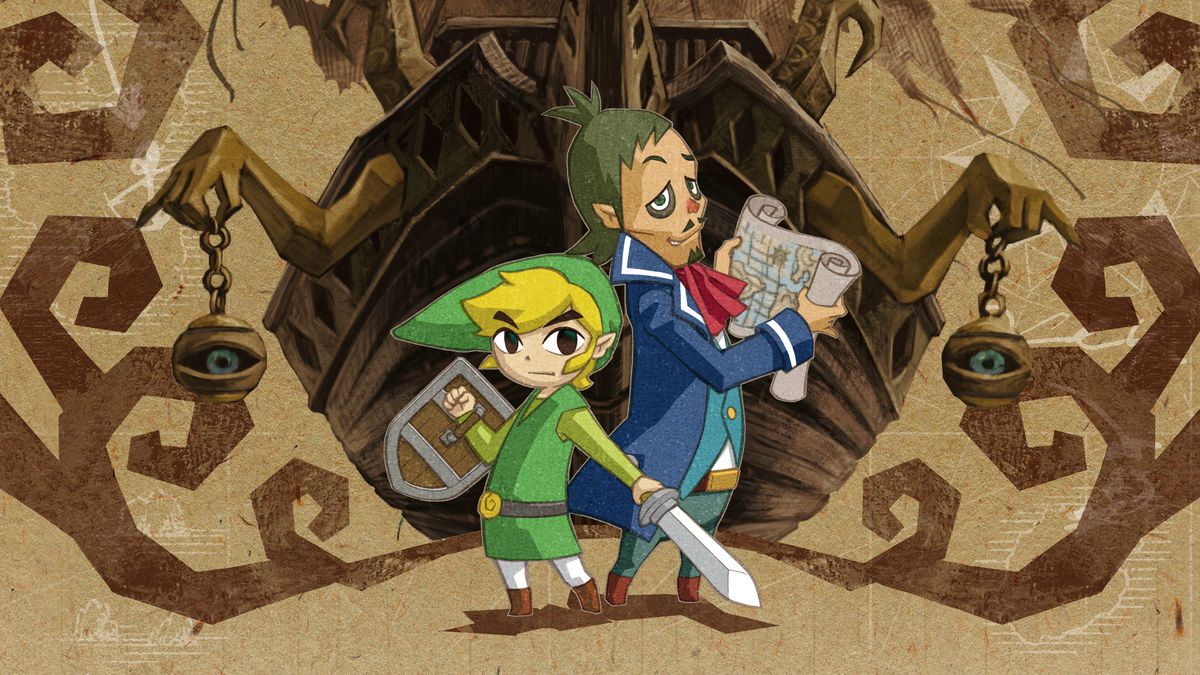
Image: Nintendo
Original release: 2007, on Nintendo DS
Where to play now: Unavailable — track down a used copy
The Legend of Zelda: Phantom Hourglass represents a somewhat awkward era of Zelda. As a direct sequel to The Wind Waker, it had big shoes to fill, and wore them a little clumsily. Phantom Hourglass was the first mainline Zelda game to be released on the Nintendo DS family of handhelds and the first Zelda game to take advantage of the console’s touch controls. Overall, the controls fit in nicely with the Zelda formula and allow players to scribble on dungeon maps and tap to fight. However, the game suffers from uneven pacing while traveling on your customizable steamboat ship, or revisiting the Temple of the Ocean King, a dungeon that requires you to come back to it multiple times. Still, I’ll remember it for its willingness to try new gameplay and test the Zelda waters. —Ana Diaz
14. Twilight Princess
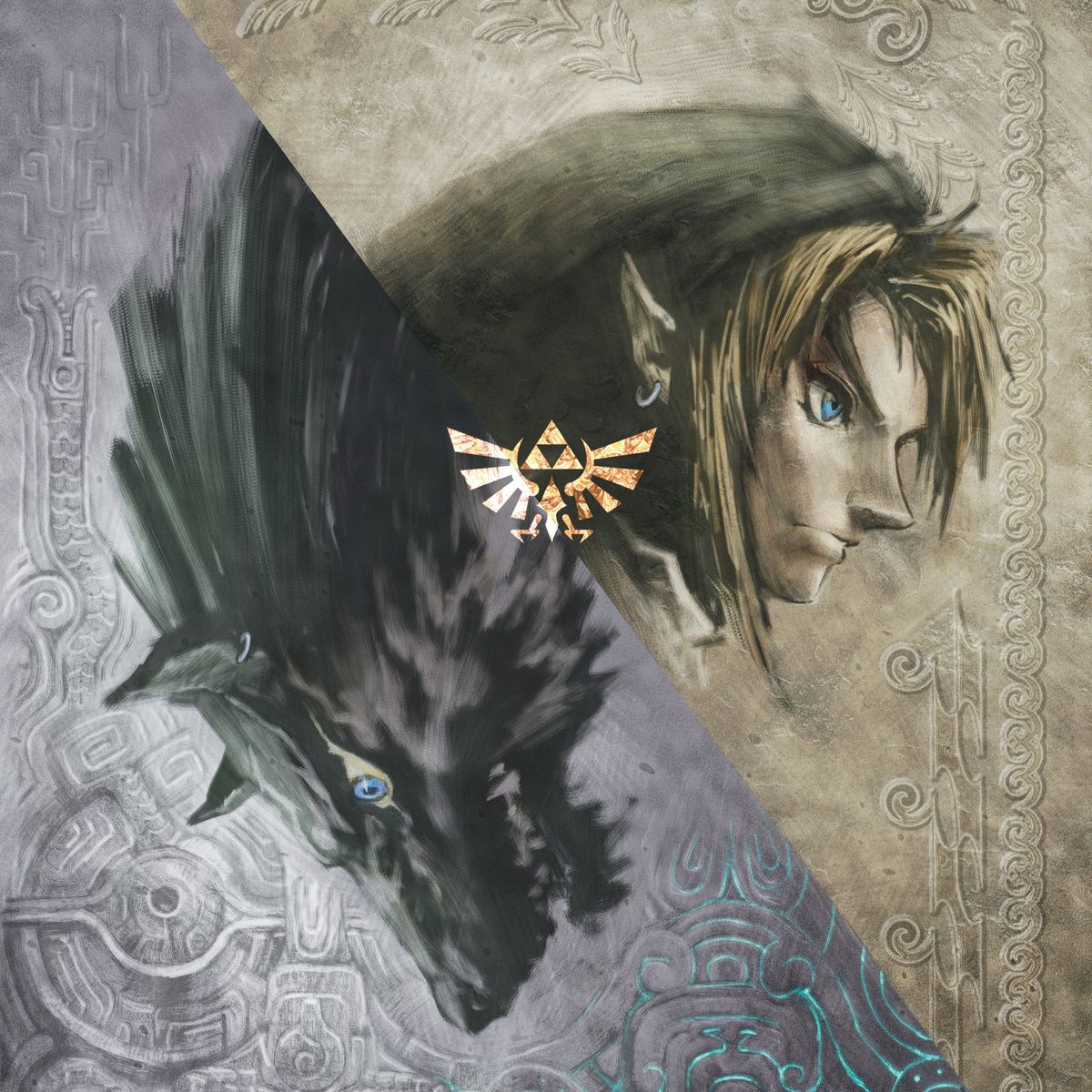
Image: Nintendo
Original release: 2006, on GameCube and Wii
Where to play now: Unavailable — track down a used copy of Twilight Princess HD for Wii U
Link spends a pretty big chunk of time in wolf form in Twilight Princess, which you’d think would be a selling point (because he looks so darn cute), but it’s actually pretty weird. After all, Link can’t do all of the best parts of being Link when he’s a wolf: throwing a boomerang, say, or twirling his sword around in a circle while shouting “Hiyah!” Twilight Princess also introduces Midna, a helper character in the vein of Navi, but a lot more condescending. I find Midna’s snarky comments to be deeply satisfying, and the conclusion of her arc at the game’s end feels more fulfilling than most of Princess Zelda’s arcs. The Legend of Zelda series does not always allow its female side characters to have much to do, but by the end of Twilight Princess, it’s actually more Midna’s story than anyone else’s. —Maddy Myers
13. Oracle of Ages / Oracle of Seasons
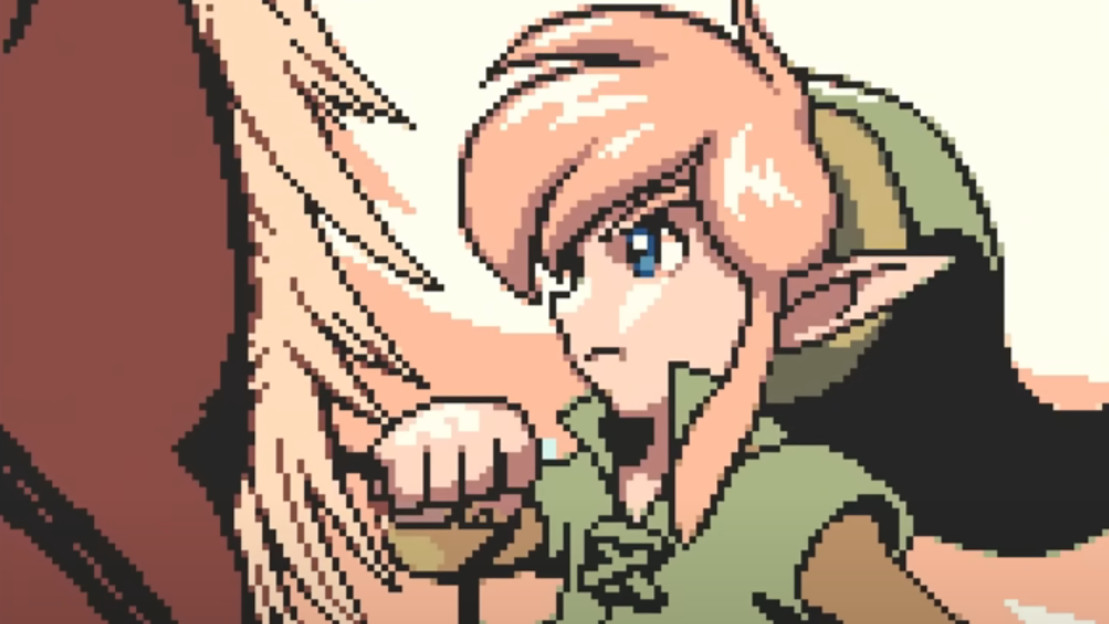
Image: Nintendo
Original release: 2001, on Game Boy Color
Where to play now: Nintendo Switch Online
In 2001, Nintendo lent the proverbial Zelda keys to Capcom. As it turns out, Capcom didn’t need them: It kicked down the door to one of gaming’s most hallowed series and made itself right at home. Billed as a double feature focused on time- and season-based puzzles, respectively, Oracle of Ages and Oracle of Seasons are tight and sophisticated enough to have emerged from the offices of Nintendo itself. (Series creator Shigeru Miyamoto had big-picture production input, to be fair.)
Ages’ time-traveling puzzles are among the finest in the 2D Zelda pantheon, and Seasons’ more action-oriented approach makes it a fresh entry in the otherwise “left-brained” franchise. Director Hidemaro Fujibayashi would go on to direct a handful of later Zelda games (The Minish Cap, Skyward Sword, and — checks notes — Breath of the Wild and Tears of the Kingdom among them), but as far as “classic” Zelda goes, few entries capture the series on a grand scale like Capcom’s dark horse two-parter. —Mike Mahardy
12. Spirit Tracks
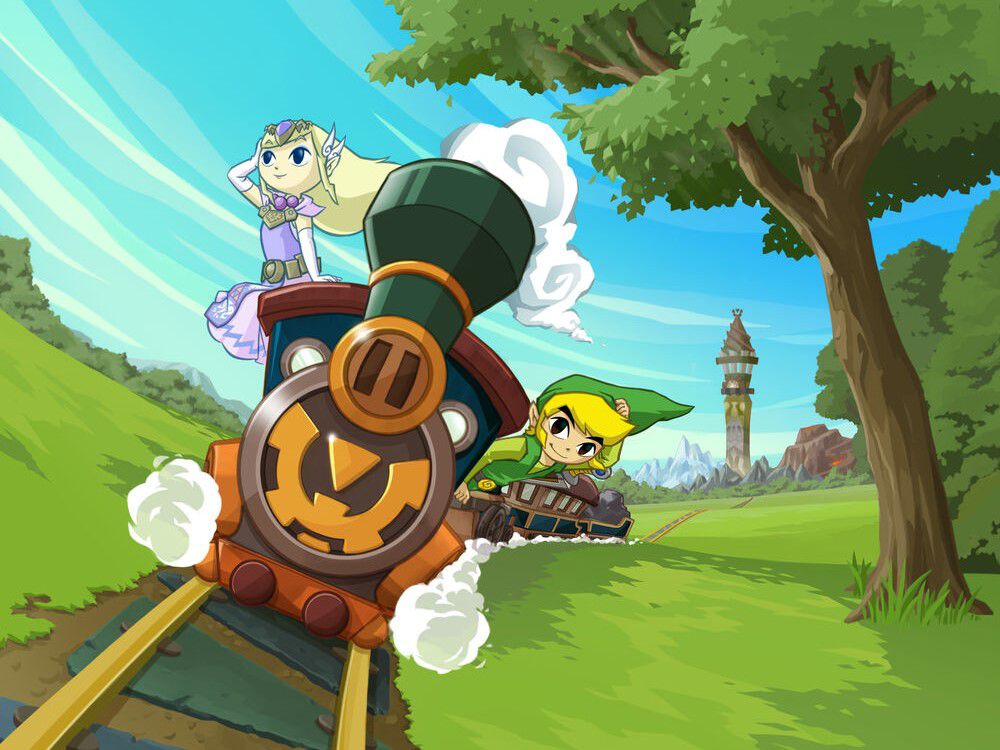
Image: Nintendo
Original release: 2009, on Nintendo DS
Where to play now: Unavailable — track down a used copy
As follow-ups in this endlessly changeable series go, Spirit Tracks has one of the most straightforward, cut-and-paste premises: it’s Phantom Hourglass but with a train instead of a boat. Like its immediate predecessor, it leans hard on stylus control, course-plotting map traversal, and a style of adventure that’s breezily approachable until it suddenly isn’t, in the grim, stealthy, piecemeal ascent of its central tower dungeon.
If Spirit Tracks ultimately surpasses Phantom Hourglass, it’s because of its sheer, ebullient charm. The appeal of its steam-train playset is irresistable, and this is also the only game in the series in which Link and Zelda — the latter admittedly in ghost form — get to hang out for the whole thing. Zelda even gets to be semi-playable, by possessing clanking suits of armor, while the pair have an adorable, innocent chemistry. Choo choo! —Oli Welsh
11. The Legend of Zelda
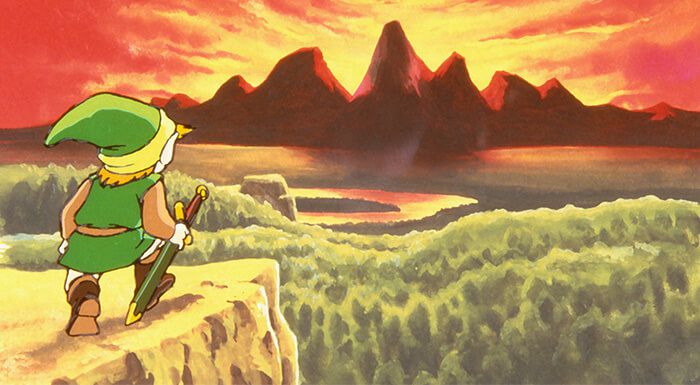
Image: Nintendo
Original release: 1986, on NES
Where to play now: Nintendo Switch Online
It’s the rare game that impresses me more with each passing year. But as trends come and go, genres flourish and stagnate, and open worlds continue to distance themselves from their late-2010s growing pains, The Legend of Zelda continually grows in my estimation. It’s opaque by today’s standards, replete as it is with hidden doorways and labyrinthine shifts from one screen to another. And given the choice, it’s fairly far down the list of “fun” Zelda games. But it stands as a progenitor of most of today’s best games, open-world or otherwise, and it took Nintendo 31 years to circle back to its elegant conceit of a sprawling, mysterious world worth exploring in Breath of the Wild. —M. Mahardy
10. Skyward Sword
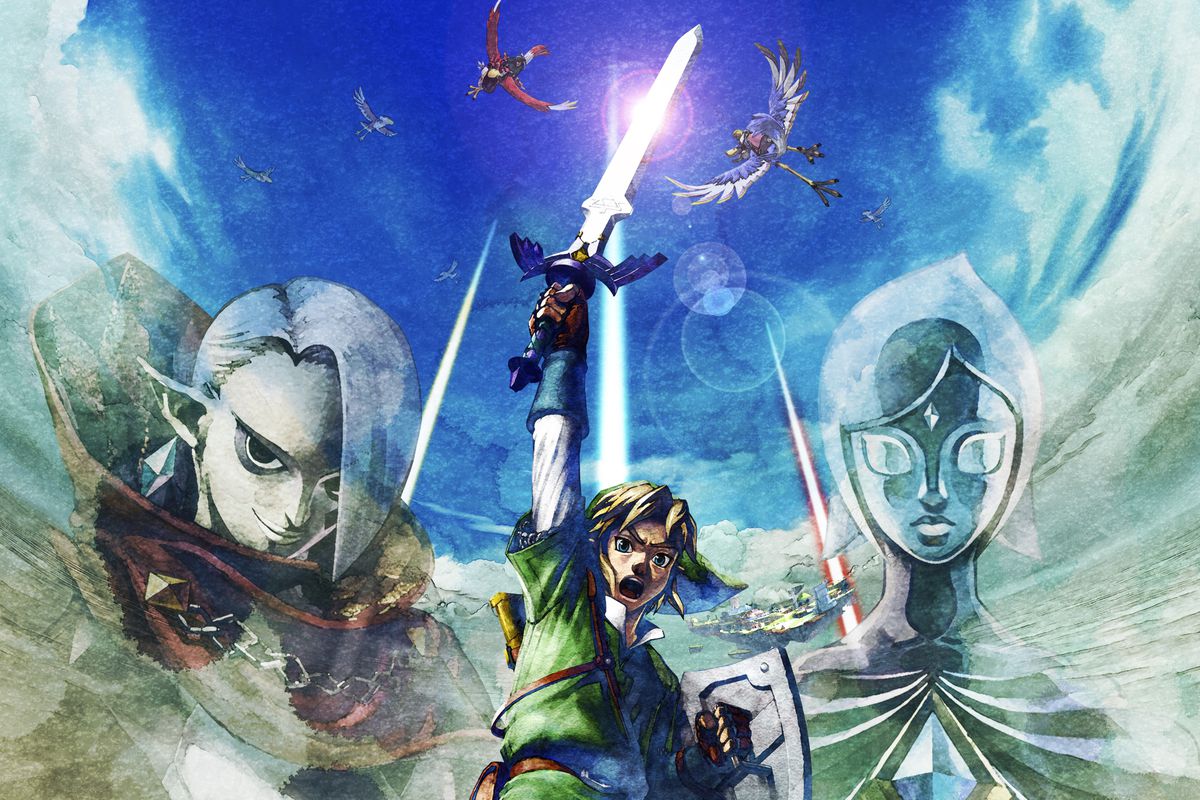
Image: Nintendo
Original release: 2011, on Nintendo Wii
Where to play now: Skyward Sword HD on Nintendo Switch
It’s time to reclaim perhaps the most consistently underrated game in the Legend of Zelda series. There are reasons Skyward Sword’s reputation has suffered. First, its original motion controls, while well implemented, are just not how anyone wants to play an epic adventure like this. Second, it has a ridiculously overwrought climax worthy of a Hideo Kojima game. Third, it arrived at just the point when the Zelda games’ Ocarina of Time-inspired design was starting to show its age.
Skyward Sword ended up being a swan song for that era of Zelda — but what a swan song. It’s a dense and satisfying game, expertly designed, with intricate, cleverly conceived dungeons that rank alongside the very best in the series’ history. And it also has a soaring, romantic spirit. Skyward Sword is perhaps the purest expression of Zelda’s high-fantasy aesthetic — and the only time the series fully owned up to being a love story. —OW
9. A Link Between Worlds
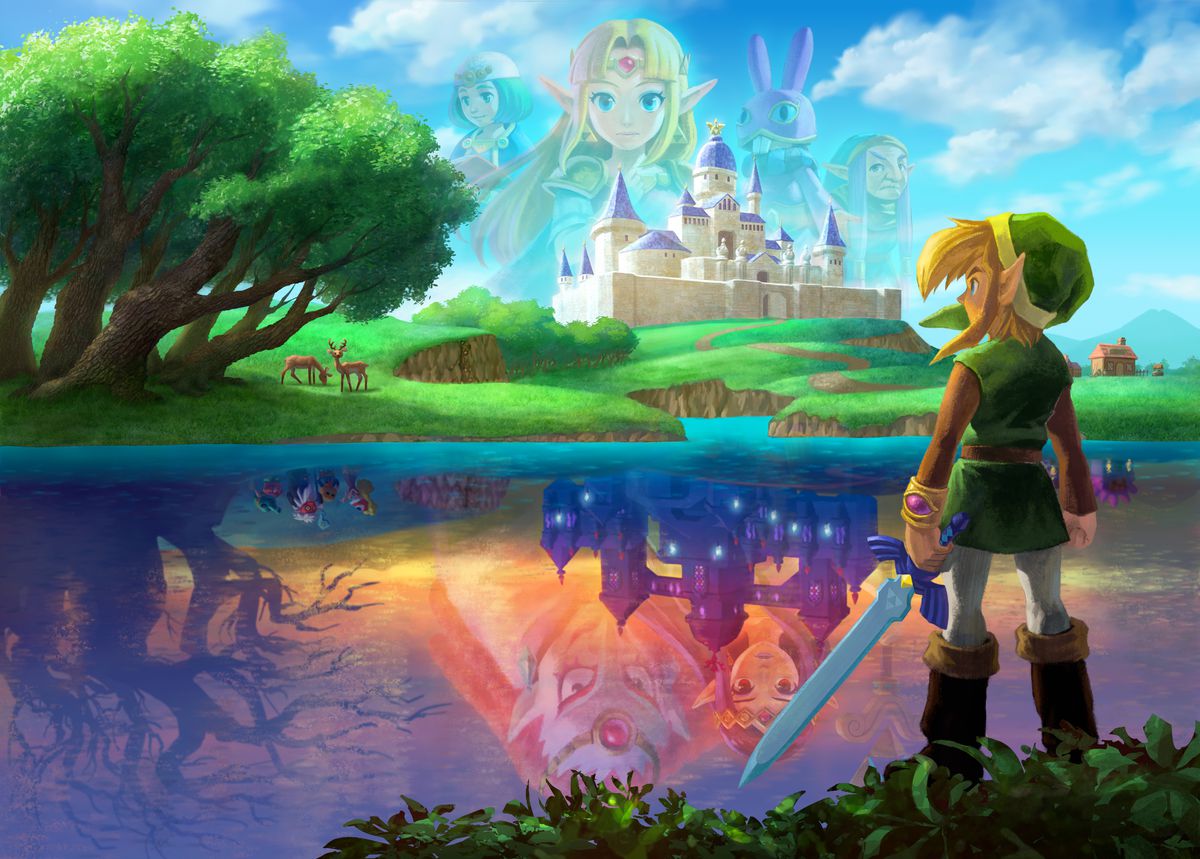
Image: Nintendo
Original release: 2013, on Nintendo 3DS
Where to play now: Boxed 3DS edition is still in print
I always found A Link Between Worlds to be a special game because of the way it iterates on the classic Zelda theme of traversing parallel worlds. Instead of using a mirror to flip between worlds, this game allows Link to transform into a 2D painting, in which form he can walk along walls and into the glittering crevices of Hyrule and its counterpart, Lorule.
For me, Lorule is one of the more interesting versions of Zelda’s classic Dark World. It isn’t just a barren wasteland filled with monsters; it’s also the home of kind and heroic people who want a better way of life. The game plays well, with perhaps the best-integrated touch controls in a Zelda game. On top of all that, it features an unconventional weapon rental system that allows you to explore wherever you want early on. The game’s title nods to the revered A Link to the Past, and it certainly doesn’t fail to live up to its namesake. —AD
8. The Minish Cap
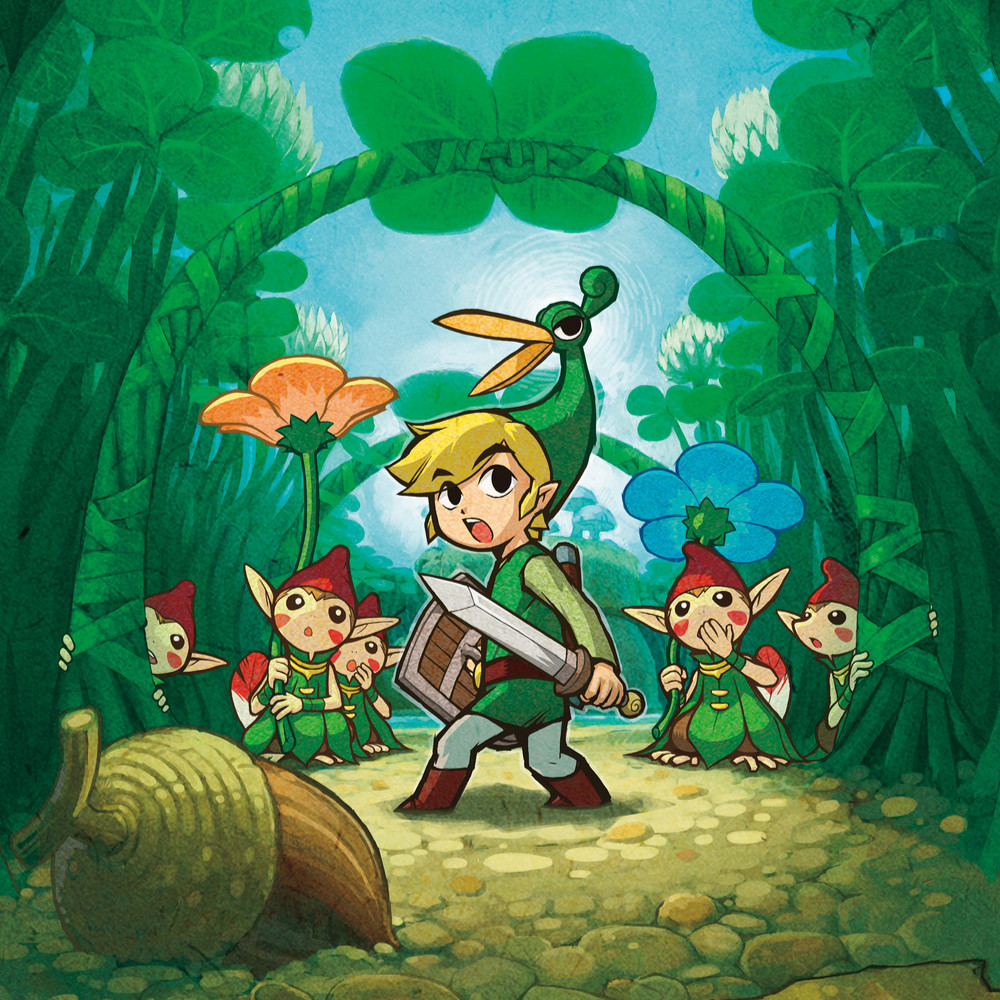
Image: Nintendo
Original release: 2004, on Game Boy Advance
Where to play now: Nintendo Switch Online + Expansion Pack
The Minish Cap is a hidden gem of the Zelda series. Developed by Capcom, this Zelda game follows Link after he meets a talking hat named Ezlo that grants him the power to shrink to the size of a pea. Exploring as a tiny hero literally changes our perspective on Hyrule and allows the developers to conjure up a sensorial and vivid world where you’ll fight Vaati and dodge the deathly plop of raindrops.
Similarly to The Wind Waker, The Minish Cap leans into a cartoony charm; you’ll meet zany sword instructors and talk to cows chewing cud. This game also contains one of the Legend of Zelda’s goofiest items, a magical cane that turns objects upside down. Combine these charms with some great dungeon design, and you have the makings of a fantastic Zelda game. It might not usually be counted among the Zelda greats, but The Minish Cap finds its brilliance in the tiny details. —AD
7. Link’s Awakening
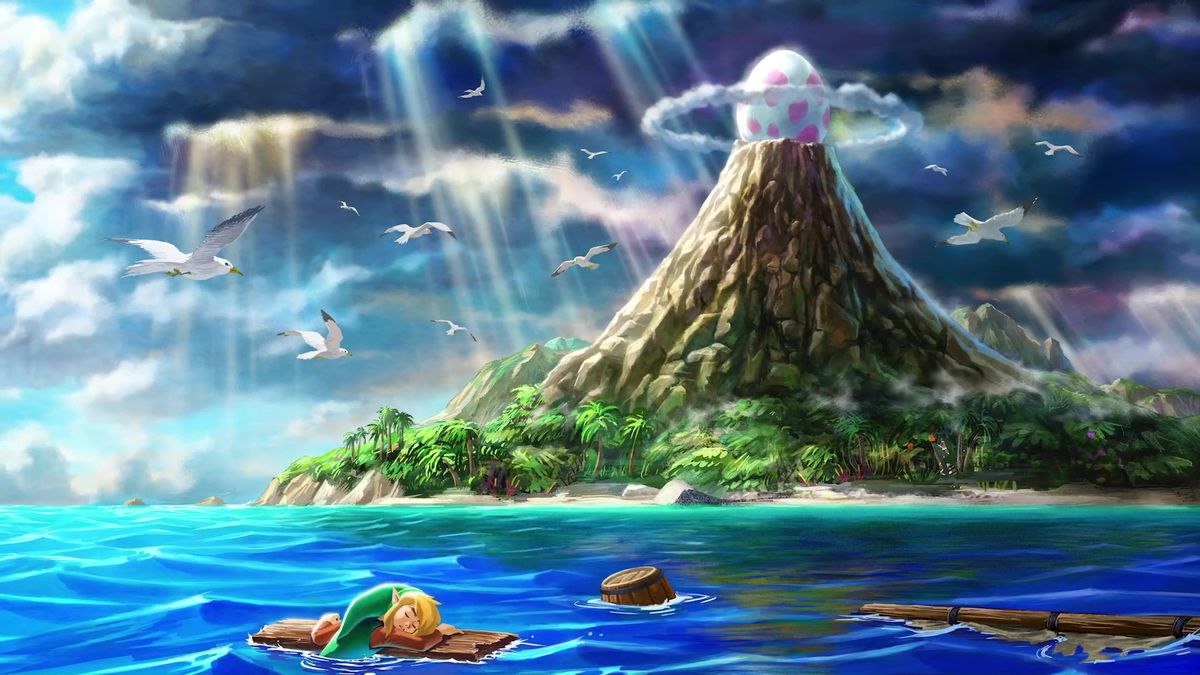
Image: Grezzo/Nintendo
Original release: 1993, on Game Boy
Where to play now: Choose between its 1998 DX form for Game Boy Color on Nintendo Switch Online or the modernized 2019 Nintendo Switch remake
This was the first-ever Zelda game I played, so all of the references to other games flew over my head, as well as the very obvious signposting about how the story would end. I felt confused, as so many players do, about why the name “Zelda” was in the title (I did think maybe the owl was named Zelda). And yet — although I experienced the classic Zelda tropes and mechanics in the dreamlike setting of Koholint Island, rather than in the larger and more defined kingdom of Hyrule — their magic captivated me completely. Like many others on this list, Link’s Awakening is a weird Zelda game, and it’s proof that being weird and silly is just as much a part of the patchwork of “being a Zelda game” as environmental puzzles or a magic sword wielded by an eternally reincarnating hero. —M. Myers
6. The Wind Waker

Image: Nintendo
Original release: 2002, on GameCube
Where to play now: Unavailable — track down a used copy of The Wind Waker HD for Wii U
The Wind Waker oozes a charm and sense of character that distinguishes it from other Zelda games and makes it a series great. It dared to take the Legend of Zelda in a bold new visual direction with its wonderfully expressive, cartoony graphics, and introduced one of my favorite Zelda casts. Tetra is an inspired take on the role of Zelda: an adventurous and capable pirate captain who helps Link along his journey. This Link, too, is one of my favorite Links, with his comic book expressions and bumbling antics.
The game moved me emotionally in ways that no other Zelda game has, and I still think about Link’s big send-off, as he waves his tiny arms goodbye to his granny. All this, and it’s thoroughly enjoyable to play. Flourishes like the adaptive soundtrack that plays stringed instruments as Link hits his enemies only add to its zippy combat. This game — from its snot-nosed kids to its timeless art style — is endlessly endearing. To me, its ingredients make for the perfect elixir of a Zelda game. —AD
5. Ocarina of Time
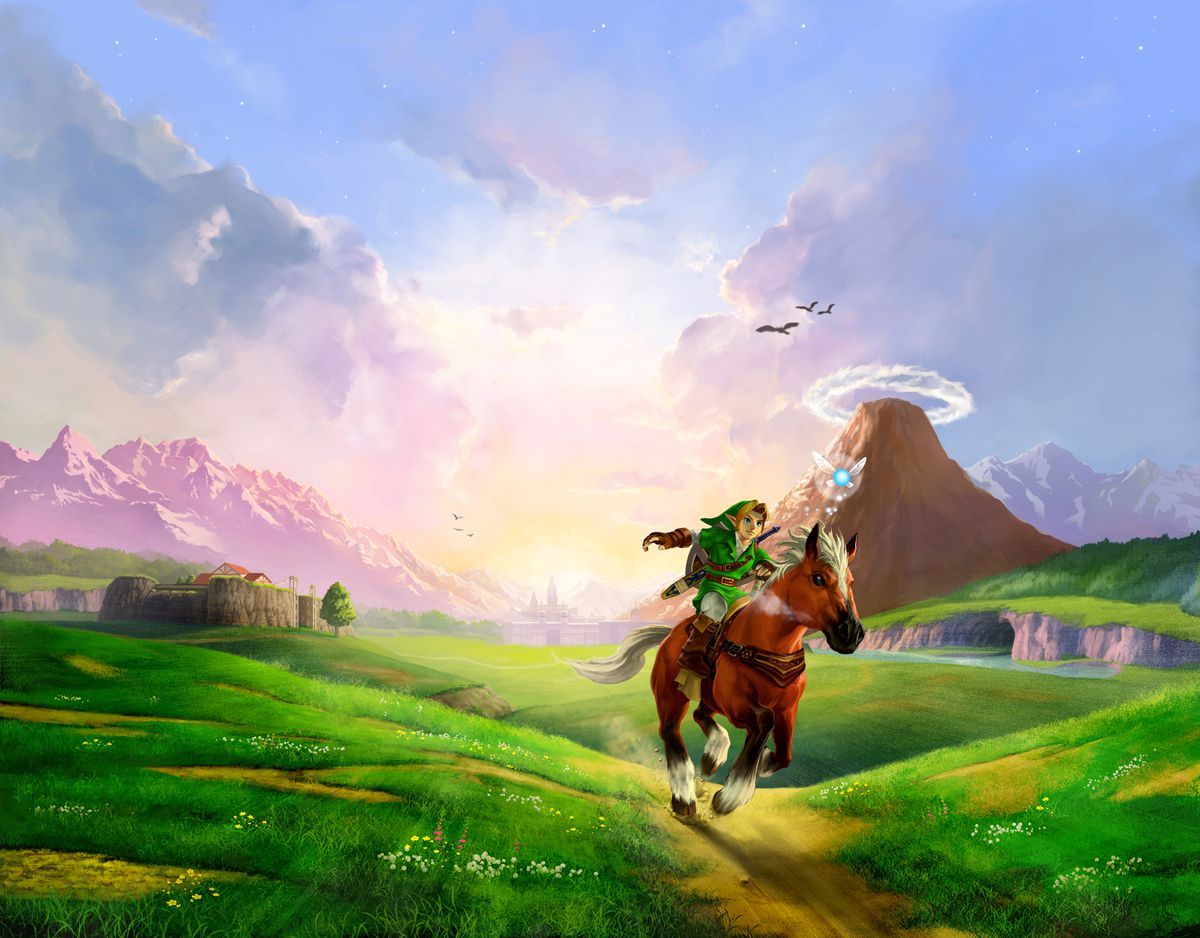
Image: Nintendo
Original release: 1998, on Nintendo 64
Where to play now: Choose between the original version on Nintendo Switch Online + Expansion Pack, or the Ocarina of Time 3D remaster on 3DS (boxed edition still in print)
Just as Twilight Princess is secretly Midna’s game, Ocarina of Time is secretly Zelda’s game — or perhaps it belongs to Sheik. It may not be the best Zelda game by modern standards, but Ocarina of Time set a benchmark by which all subsequent entries have been measured, particularly when it comes to storytelling and world-building. It offers up the illusion of an open-world Hyrule, planting the seeds for a garden that would bloom in Breath of the Wild. And it’s the game with a time-travel story that splintered the entire series into disparate arcs — perhaps the most important linchpin in the greater Ganondorf saga. And it still holds up after all these years. Too bad its best version is relegated to the Nintendo 3DS — at least, for now. —M. Myers
4. Breath of the Wild

Image: Nintendo
Original release: 2017, on Nintendo Switch and Wii U
Where to play now: Nintendo Switch
Breath of the Wild represents the most consequential overhaul the Zelda series has had since it moved into 3D with Ocarina of Time; in fact, it might be the most consequential ever, bravely scrapping most of the design hallmarks of a revered game series. Nintendo was seeking to modernize Zelda, but also to cut through 30 years of accumulated tradition, all the way back to the untamed adventure of the very first game.
It hardly needs to be said what a success it was: Breath of the Wild catapulted the Zelda series to a new level of popularity and challenged the assumptions of a lot of open-world and role-playing game design in a way that the rest of the industry is still digesting. It’s a dynamic, organic, thrillingly pure adventure, and the only reason it doesn’t top this list is because of what followed. —OW
3. A Link to the Past

Image: Nintendo
Original release: 1991, on SNES
Where to play now: Nintendo Switch Online
Writing entries for this ranked list has me thinking about just what it is that makes a Zelda game great, and I think it’s the moment of realization. A Link to the Past serves up delicious moments of realization over and over and over again. You figure out that a cracked wall can be blown open to reveal a hidden passageway — oooh! You get a brand-new tool and you realize exactly how you need to use it — aha! You suddenly figure out the trick to a boss fight — take that! And then you realize that you have not even come close — not even close — to seeing all of the discoveries on offer here. A Link to the Past delivers on the pure dopamine rush of discovery, forcing a grin onto your face at every new revelation. It just feels good. —M. Myers
2. Majora’s Mask
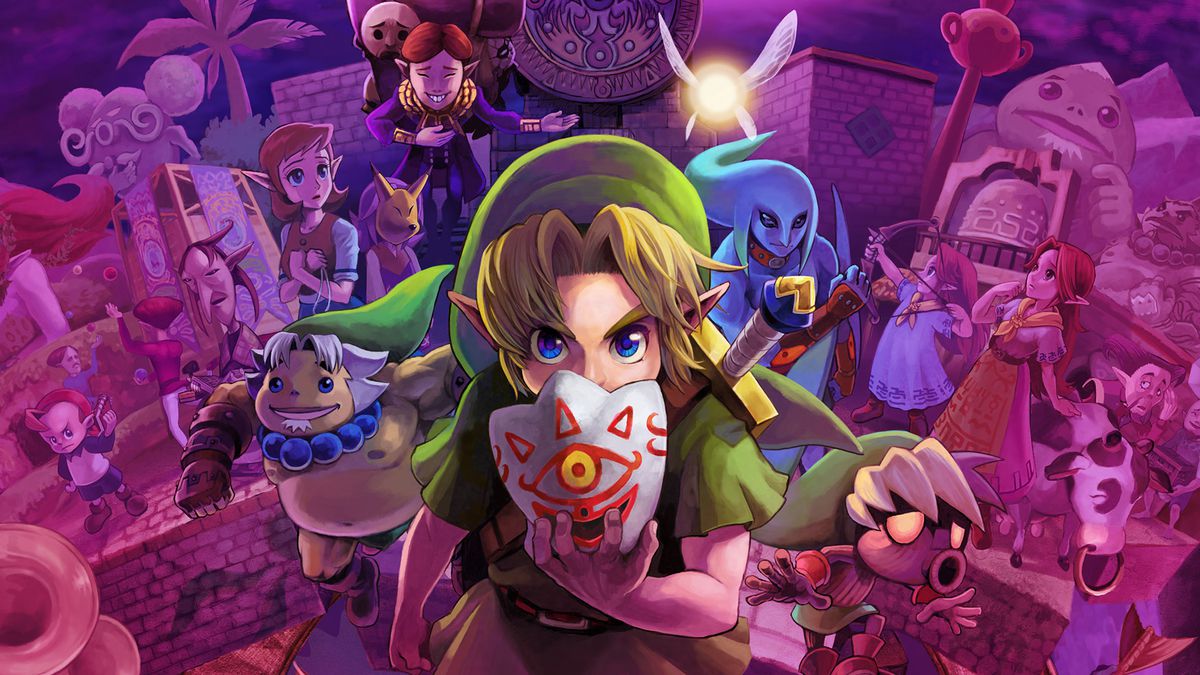
Image: Nintendo via Polygon
Original release: 2000, on Nintendo 64
Where to play now: Choose between the original version on Nintendo Switch Online + Expansion Pack, or the Majora’s Mask 3D remaster on 3DS (boxed edition still in print)
As we’re talking about a series so centered on music, allow me a metaphor: Whereas Ocarina of Time’s time travel was classical in its approach (elegant, balletic, and nimble), Majora’s Mask’s time loop was more reminiscent of jazz: fractured, messy, and challenging, but revelatory all the same. Arriving two decades before the time-loop craze comprising Outer Wilds, Deathloop, and 12 Minutes, Majora’s Mask puts Link in a three-day cycle that unwinds and respools in a strange dream world replete with characters contemplating the impending apocalypse. Compared to most games in the series, Majora largely revolves around side quests, which are largely predicated on the collection of masks. Said quests reset themselves every time Link travels back to the dawn of the first day, (hopefully) armed with the necessary knowledge to bolster his collection and save a life or two in the process.
Majora was the feverish answer to a confounding question: “How do we follow the resounding success of Ocarina of Time and also bridge the gap between the Nintendo 64 and the GameCube?” No one could have predicted the answer: a melancholy, tick-tock ballet of thwarted dreams and desperate lives in the face of the apocalypse, the most intimate and personal Zelda has ever been. It remains the strangest and darkest entry in the series, and I doubt we’ll ever see anything like it again. —M. Mahardy
1. Tears of the Kingdom
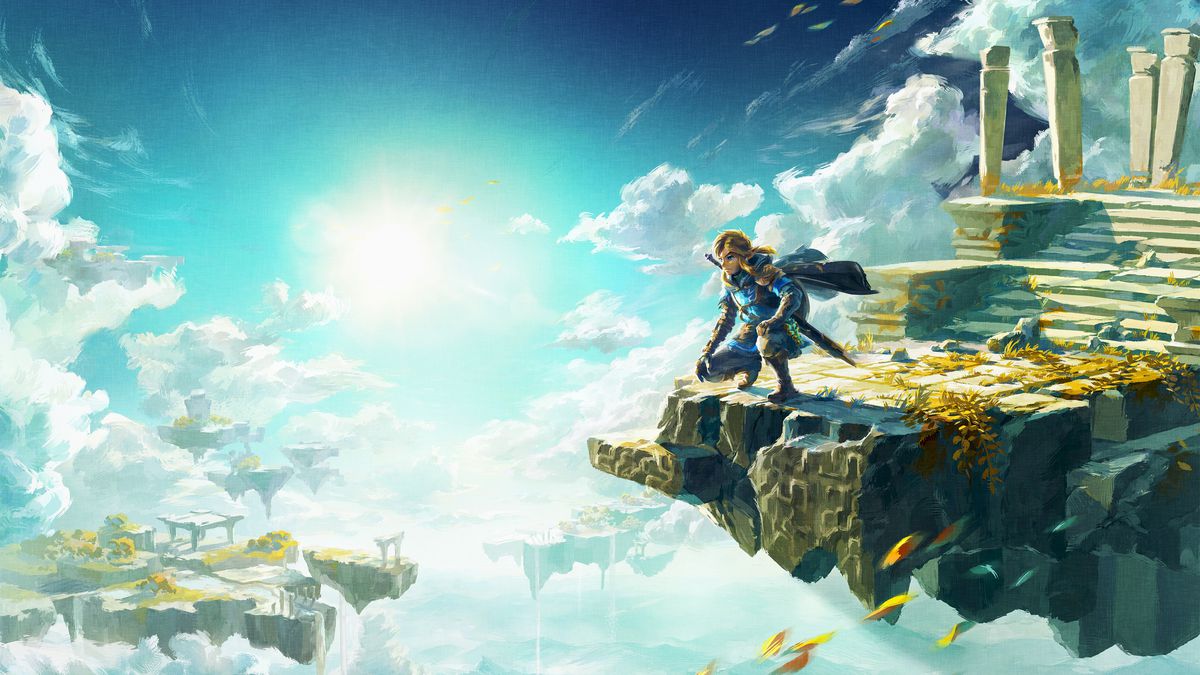
Image: Nintendo
Original release: 2023, on Nintendo Switch
Where to play now: Nintendo Switch
Every Zelda game has built upon the foundations of the games before it, with even the characters in its world acknowledging the myths of yore. No one believes more in the concept of predicting the future based on the past than the developers of Zelda — as well as Princess Zelda herself, who opens Tears of the Kingdom by guiding Link through a series of historical underground murals.
And yet even Princess Zelda in her wisdom couldn’t possibly have predicted how incredible and miraculous her story would become. Tears of the Kingdom is a reflection of this continued promise: You may imagine you understand — based on the history of Zelda games — how ambitious and creative and world-warping a Zelda game could be. And yet that very world will still surprise you. Tears of the Kingdom still surprises me. It’s a gift that I can’t believe we all got. —M. Myers
- SEO Powered Content & PR Distribution. Get Amplified Today.
- PlatoData.Network Vertical Generative Ai. Empower Yourself. Access Here.
- PlatoAiStream. Web3 Intelligence. Knowledge Amplified. Access Here.
- PlatoESG. Carbon, CleanTech, Energy, Environment, Solar, Waste Management. Access Here.
- PlatoHealth. Biotech and Clinical Trials Intelligence. Access Here.
- Source: https://www.polygon.com/zelda/24012081/best-zelda-games-ranked



